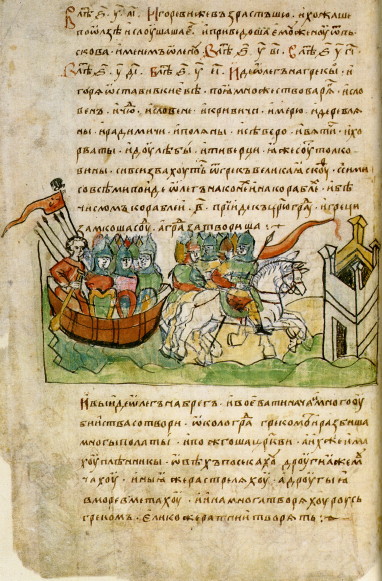Illumination
Illumination. Colored illustration and decoration of early manuscripts. The illuminations contained in imported Greek and Bulgarian manuscripts served as models for the illuminators of the first books written in Ukraine. The three illuminations (of the Evangelists John, Luke, and Mark) in the Ostromir Gospel (1056–7) and the eight (including an image of Christ and a portrait of Prince Sviatoslav II Yaroslavych and his family) in the Izbornik of Sviatoslav (1073) are painted in vivid colors and gold in the Byzantine style and are embellished with a geometric and plant ornament that shows traces of local influence. The five illuminations in Princess Gertrude's so-called Trier Psalter (1078–87), including a portrait of her son Yaropolk Iziaslavych with his wife Iryna (Kunigunde) and depictions of the Mother of God enthroned, of Christ's Nativity, and of the Crucifixion with the Evangelists, are done in a Byzantine-Romanesque style that suggests they originated in Western Ukraine. Besides illustrations these manuscripts contained purely decorative artwork: the headpieces, tailpieces, and initials consisted of interlacing flowers, leaves, and geometric figures.
The illuminations produced in the 12th and 13th centuries, mostly in the western regions of Ukraine, are more modest in form. They are found in such manuscripts as the Dobrylo Gospel (1164), the Khrystynopil or Horodyshche Apostolos (12th–13th centuries), the Halych Gospel (13th century), the Peremyshl Gospel (beginning of the 13th century), the Buchach or Horodyshche Gospel (13th century), the Instructions of Saint Ephraem of Syria (1492), and the Kyiv Psalter (or Spiridon Psalter) (1397). Their themes vary: they depict saints, battles, landscapes, and allegories. The Orations of Gregory of Nazianzus have a remarkable miniature of Christ.
The crowning work of the 14th century is the Kyiv Psalter of 1397 with 226 sheets adorned with 293 masterful miniatures. The decorative interlace is influenced by neo-Byzantine and Balkan styles and incorporates teratological motifs. To the 15th century belong the Radziwiłł Chronicle, with 618 miniatures that are copies of a massive Kyivan historical work from the 12th–13th centuries. Also remaining from the 15th century are fine Gospels from Halych, Serniv, and Mukachevo.
Renaissance influences are detectable in the illuminations of later manuscripts such as the Kyivan Cave Monastery Gospel (1538), the Khyshevych Gospel (1546), the Kholm Gospel (mid-16th century), the Zahoriv Apostolos (1554), a mid-16th-century missal illuminated by Master Andrii, the Peresopnytsia Gospel (1556–61) illuminated by Mykhailo Vasylovych from Sianik, the Stryi Gospel (1594), and the Kermanych Gospel (1596). Besides Renaissance elements, folk designs appear in the headpieces and tailpieces of 16th- and 17th-century manuscripts.
Baroque motifs appeared in the illuminations done in the second half of the 17th and the beginning of the 18th century. Fine examples of this type are found in the Kyivan Cave Patericon (copied in Hadiach in 1658), Lazar Baranovych's Missal (1665), Antin Radyvylovsky's Ohorodok Marii Bohoroditsy (The Garden of Mary, the Mother of God, 1676), Yosyf Shumliansky's Zertsalo (Mirror, 1686), several Horologion editions (1679, 1721, 1747, 1777), a missal (1718), and an Apostolos (1727). Headpieces, initials, and tailpieces became more elaborate, and were dominated by fantastic plant motifs.
BIBLIOGRAPHY
Svientsits’kyi, I. Prykrasy rukopysiv Halyts’koï Ukraïny XVI v., 3 issues (Zhovkva 1922–3)
Zholtovs’kyi, P. Ukraïns’ka rukopysna knyha ta ïï ozdoblennia (Kharkiv 1926)
Zapasko, Ia. Ornamental’ne oformlennia ukraïns’koï rukopysnoï knyhy (Kyiv 1960)
Svirin, A.N. Iskusstvo knigi drevnei Rusi (Moscow 1964)
Lohvin, H. Into the Deep Past: Miniatures and Ornaments in Old Manuscripts of the 11th–18th Centuries (Kyiv 1977)
Sviatoslav Hordynsky
[This article originally appeared in the Encyclopedia of Ukraine, vol. 2 (1989).]
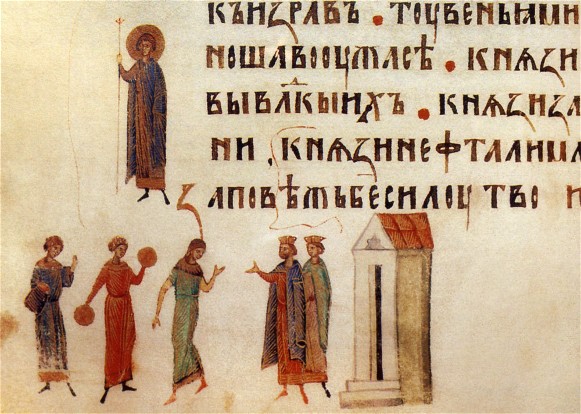
.jpg)
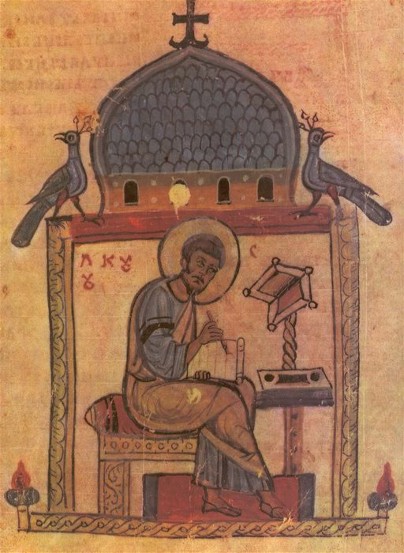
.jpg)
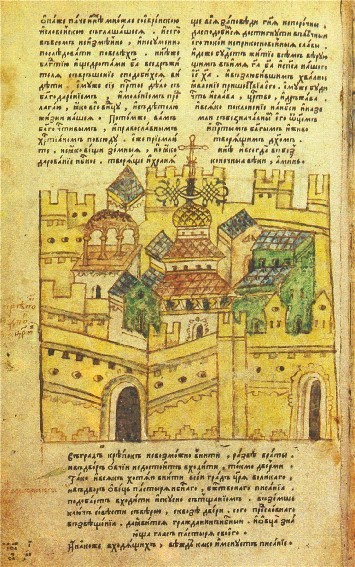
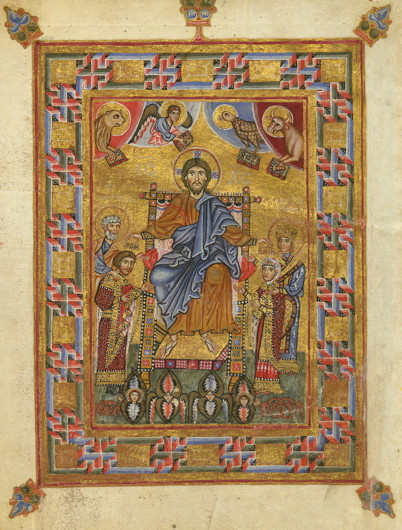
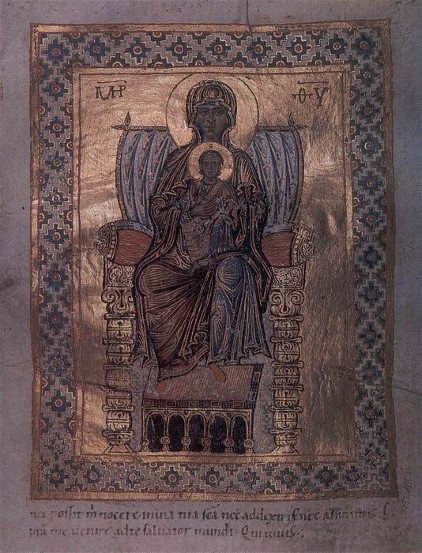
%20Mathew.jpg)
.jpg)
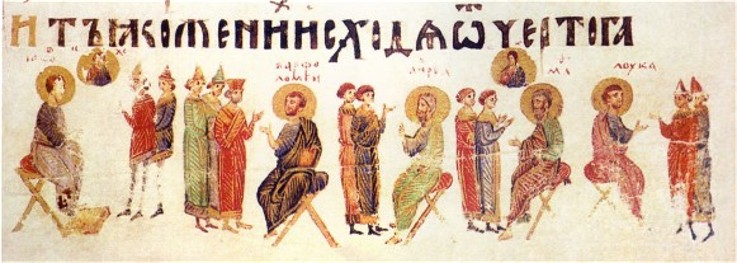
.jpg)
.jpg)
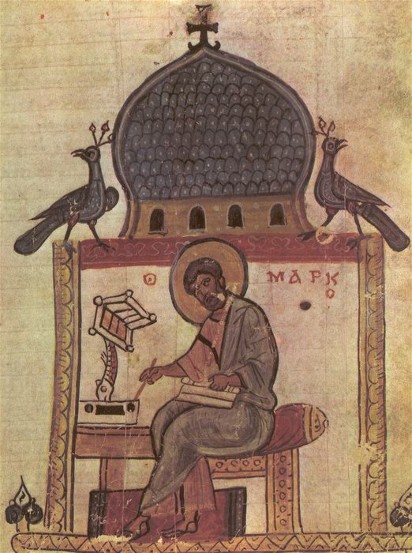
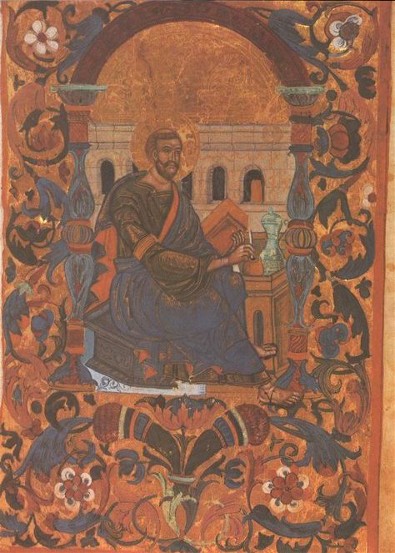
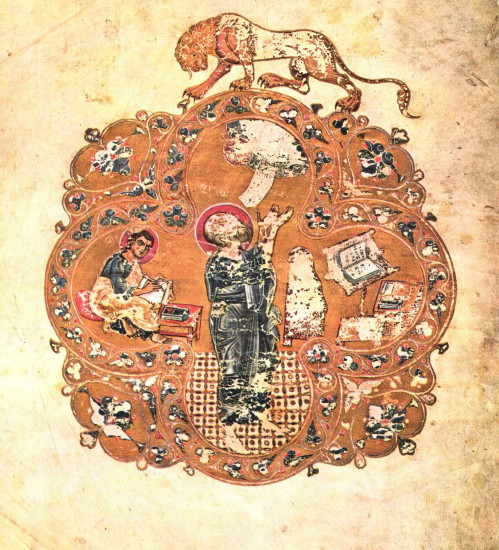
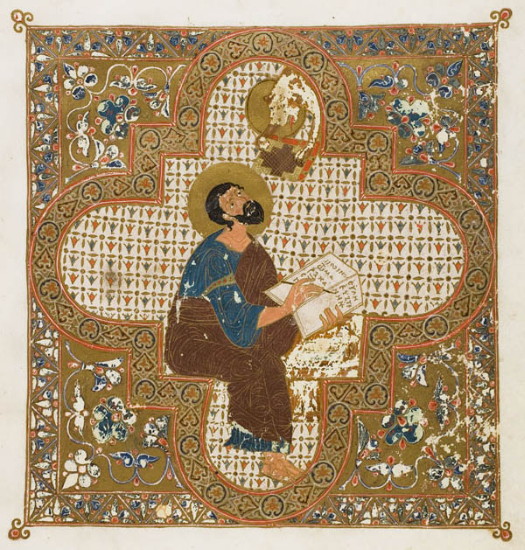
%20illumination.jpg)
%20family%20of%20Sviatoslav%20II%20Yaroslavych.jpg)
%20headpiece.jpg)
